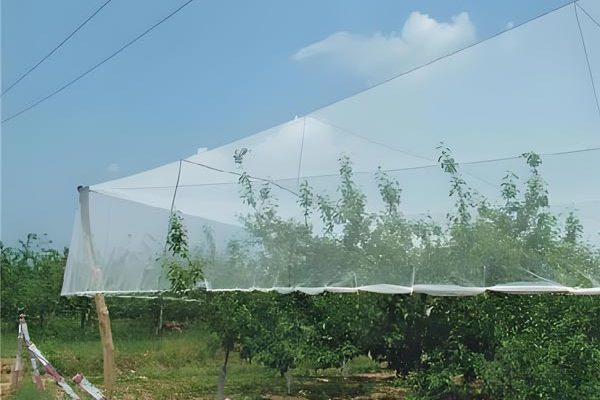Do you face these challenges when growing citrus?
- Consumers increasingly prefer seedless citrus. Demand is strong, and margins are high. Yet seedless production is difficult, so the high‑value market stays out of reach.
- Even worse, Huanglongbing (HLB), known as “citrus greening,” is spreading across citrus regions worldwide. It moves fast and is hard to cure. Chemical control offers limited results and raises environmental concerns, while vectors such as the Asian citrus psyllid are hard to eliminate.
- Beyond disease, birds peck fruit, hail causes bruising, and strong winds break branches. Traditional protection is limited, and seeing fruit near harvest destroyed directly hurts your profits.
If this keeps you up at night, citrus netting may help. As a manufacturer deeply focused on fruit‑tree netting, INSONSHADE will explain why citrus trees are covered with netting — and how to select the best netting for your needs.
What is citrus netting?
Citrus netting is a physical barrier system made from high-density polyethylene (HDPE). By combining different mesh sizes and coverage methods, growers can provide all-around protection for their citrus trees.
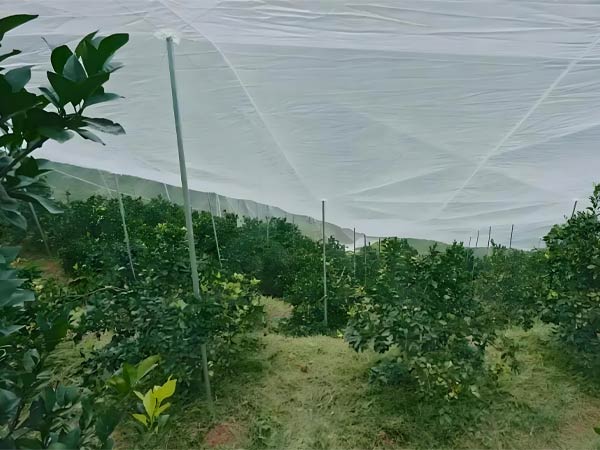
Small citrus net, big impact
- In materials, mainstream products use HDPE with UV stabilizers. This ensures strength and weather resistance for long-term outdoor use, as well as environmental safety.
- In terms of structure, mesh sizes range from large to fine, targeting various scenarios, including bird control and insect control. Coverage is flexible: you can bag individual trees, cover the full canopy, or build hoop‑house structures for large‑scale planting to create a more stable microclimate.
- In performance, quality nets balance airflow and light transmission to prevent photosynthesis from being compromised. They also deliver strong tensile and impact resistance. Service life can reach 5–10 years, meeting different operational cycles.
How citrus trees’ netting protects your orchard: three mechanisms
Somebody may ask: “Why are citrus trees covered with netting?” And there are the answers.
1. Seedless production mechanism
Whether a fruit has seeds depends mainly on pollination during bloom. By covering trees with fine mesh, you can block bees and prevent cross‑pollination, helping you produce seedless citrus. In practice, lay nets before bloom. Use a 20–40 mesh screen to stop pollinators while allowing air and light to flow. After bloom, adjust coverage to balance pest control and tree growth.
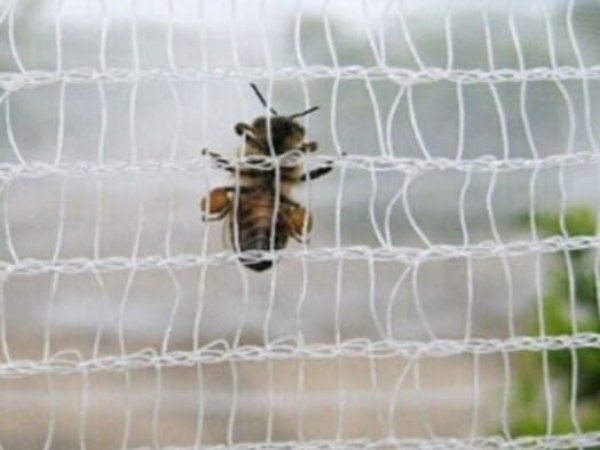
How citrus netting keeps bees out of the orchard
2. Pest and disease control mechanism
Fine-mesh screens keep psyllids and other vectors from contacting trees, cutting off HLB transmission. In field practice, psyllid contact rates drop significantly, and HLB risk is effectively controlled. Because this is a physical approach, you can reduce the frequency and dosage of chemicals, moving closer to sustainable control.
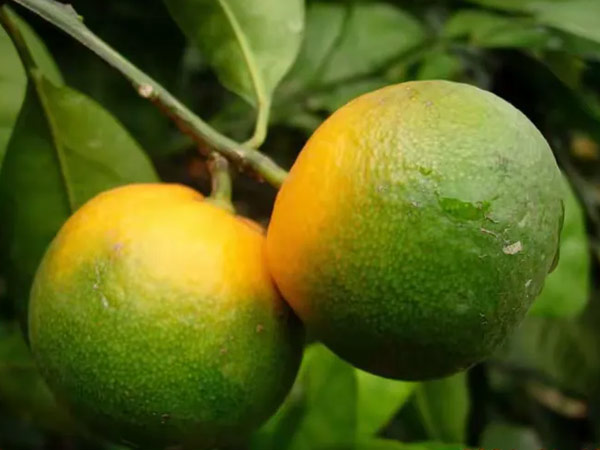
HLB‑affected fruit — “red‑nose fruit”
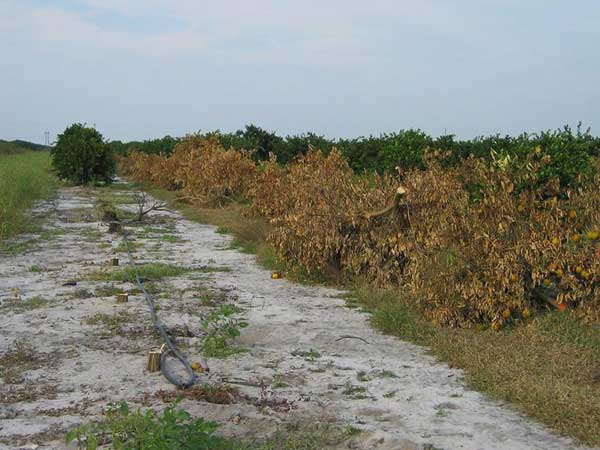
Citrus orchard affected by Asian citrus psyllid (ACP)
3. Natural hazard protection mechanism
Against natural hazards, netting uses the right aperture, material, and tension to block birds, soften hail impact, and reduce wind force through deflection. Over time, it improves load distribution on trees and the orchard microclimate, reducing the impact of extreme weather on yield and quality.
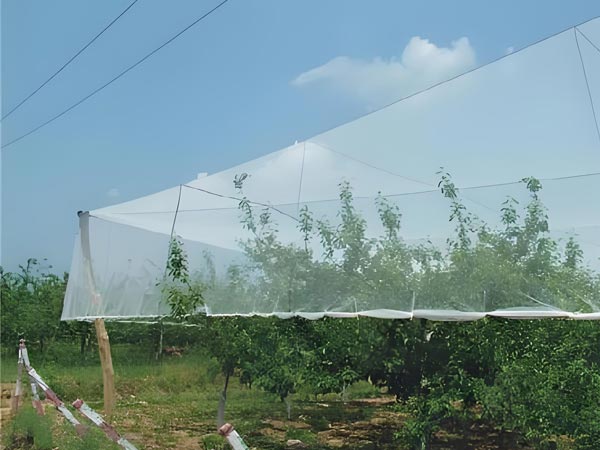
Citrus netting also helps against hail
How to choose the right citrus netting?
Choosing citrus netting requires balancing technical parameters, application scenarios, and economics. Mesh size, coverage method, and material grade directly affect protection, management cost, and ROI. You should configure them scientifically to your needs.
1. Choose the mesh size by purpose
Mesh size depends on the target pest or hazard. For seedless production, you need to block bees and other pollinators; use 20–40 mesh. For HLB vector control, target smaller insects, such as psyllids; increase the mesh size to 40–60. For bird control, choose large apertures of 2–5 cm. For multiple goals, use layered coverage or adjust mesh sizes by growth stage to achieve integrated protection.
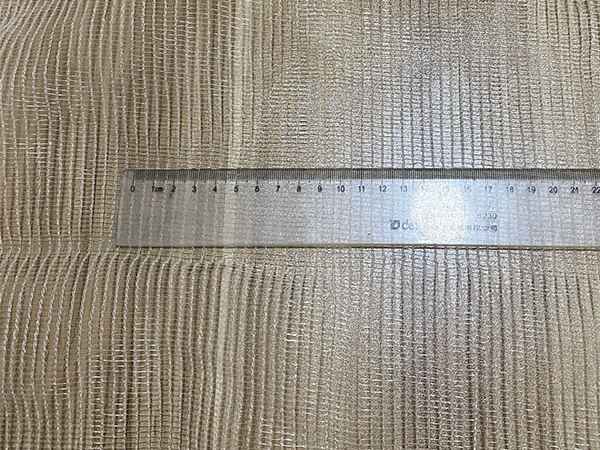
Different mesh counts serve different functions
2. Choose coverage by orchard scale
Coverage should strike a balance between management efficiency and investment. For small orchards (under 10 mu), use individual bagging or full‑canopy netting for precise control and flexibility. For medium orchards (10–50 mu), full‑canopy netting improves efficiency while ensuring protection. For large orchards (over 50 mu), consider hoop‑house coverage to stabilize the microclimate and reduce per‑acre management costs.
3. Choose material grade by budget
Material grade should balance upfront cost and long‑term benefit. Economy products utilize basic HDPE with a 3–5 year life, suitable for pilots or those with tight budgets. Standard products incorporate UV stabilizers, providing 5–7 years of protection and offering the best overall value. Premium products use higher‑grade resins and advanced processes for 7–10 years, ideal for long‑term and brand‑driven operations.
Citrus netting installation guide
Proper installation is critical to performance, service life, and day‑to‑day management. Follow a standardized process and set a solid maintenance plan.
1. Before you install
Measure and plan first. Confirm orchard area and canopy size. Prepare net sizes and quantities accordingly, plus tools like scissors, cable ties, and support poles. Aim for one‑time completion to avoid rework.
2. Installation steps
Individual bagging suits nursery trees and fine‑scale management. You can buy bag‑type citrus tree netting locally or cut netting to bag sizes that match canopy dimensions. Cover from the top and fit the canopy shape. Fasten edges with dedicated ties or rings. Keep proper tension—do not over‑tighten. Reserve vents and inspection openings for airflow and routine care.
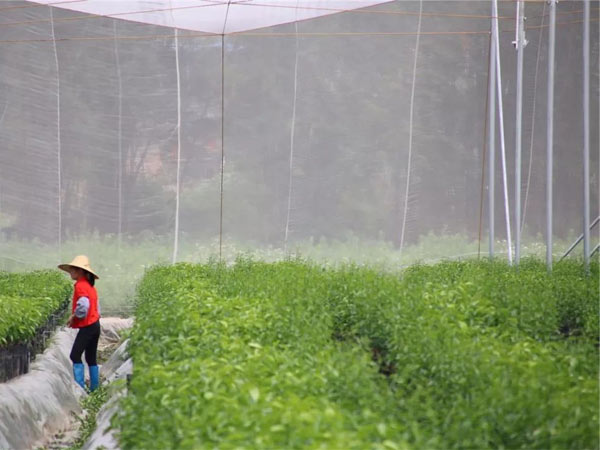
Full‑coverage citrus seedling nursery
Full‑canopy netting suits mature trees at scale. Build a support frame that matches the canopy shape. The frame should have enough strength and weather resistance. Lay the net flat on the frame with no creases. Use professional fastening systems to secure the net and leave service and harvest aisles around the edges. Test overall stability to ensure it can handle expected wind and snow loads.
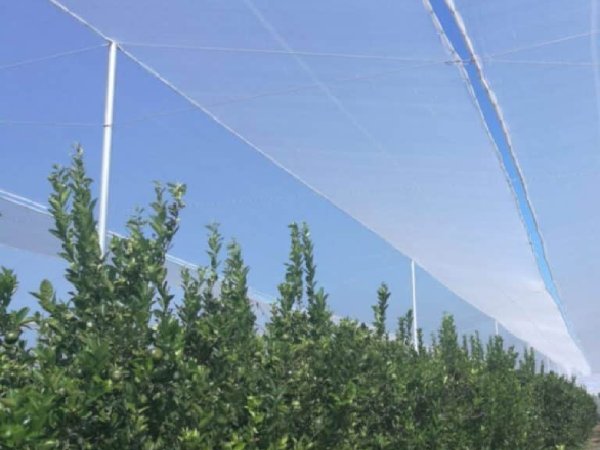
Hoop‑house coverage — bee netting for citrus
Hoop‑house coverage suits large, continuous blocks. Build arched structures per design, with the right spacing and height. Lay nets along the arches and fasten with dedicated connectors. Configure ventilation, such as side vents and roof vents, to manage temperature and humidity. Test ventilation, drainage, and structural stability after installation.
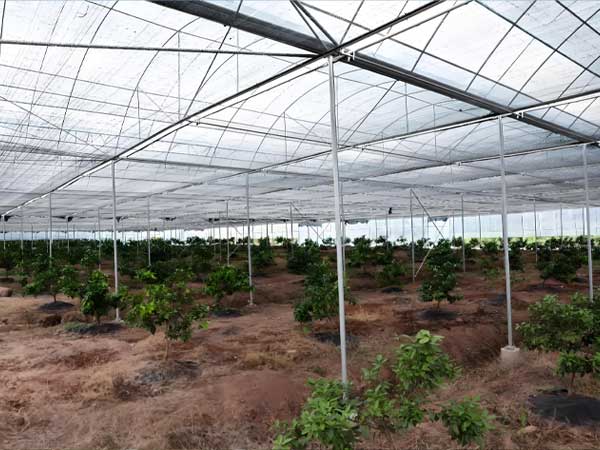
Citrus netting greenhouse designed to withstand strong winds
3. Installation notes
Mind mesh orientation and drainage paths to avoid water pooling. Inspect fasteners regularly to prevent loosening or tears. Reserve ventilation to balance protection and growth. Plan for end‑of‑season retrieval and redeployment to cut long‑term O&M costs.
Citrus netting case studies
Let’s look at some applications of citrus netting:
Case 1: Large‑scale orchards in Florida
In Florida, research by the University of Florida spurred large‑scale adoption. Over 1 million citrus trees are now under netting across about 17,000 acres. Studies show zero HLB symptoms on netted trees. Psyllids cannot penetrate the mesh, and tree physiology remains healthy.
Source: successful-science-mesh-now-covers-about-1-million-citrus-trees…
Case 2: Seedless citrus project in California
In California, companies such as Kings River Packing cover orchards during bloom to prevent bee cross‑pollination and successfully produce seedless citrus. This approach is also used in regions such as Georgia.
Source: netting-seedless-mandarins-california
Conclusion
Compared with scattered traditional methods, citrus netting delivers a systematic protection strategy. During bloom, fine mesh controls pollination timing and raises seedless success rates. During growth, physical barriers cut off vector contact and reduce HLB risk. When you face birds, hail, or strong winds, the net buffers impact, isolates threats, and deflects airflow. This “one net, many uses” synergy makes inputs and outcomes more predictable and shortens the payback period.
As experts in agricultural protection netting, INSONSHADE can provide customized citrus netting for orchards of all sizes—from aperture and weight to width. Whether you aim for seedless production or a more efficient pest and hazard control system, contact us for one‑on‑one advice and an implementation roadmap. Do not let these pain points keep hurting your citrus business. Reach out now and build a stronger foundation for stable yield and quality next season.
